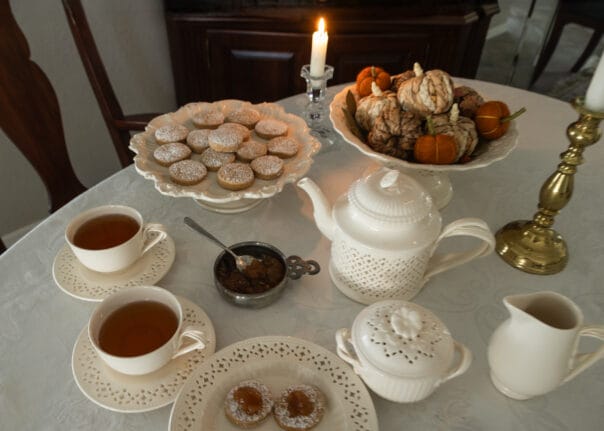Colonial Cooking: Bylandersea America 250
Before “no taxation without representation” became a rallying cry, tea and coffee were already simmering at the heart of colonial life. In 18th-century America, what people drank wasn’t just about taste — it reflected class, culture, and eventually, politics.

The Social Cup
In the early 1700s, tea was the drink of refinemen, imported from China and served in delicate porcelain cups. It arrived through the ports of Boston, New York, Philadelphia, and Charleston, carried in crates stamped with the mark of the British East India Company. Wealthier colonists displayed tea tables, silver strainers, and ornate teapots as symbols of gentility.
Coffee, meanwhile, arrived from the Caribbean and South America. It was often roasted at home, its earthy aroma filling kitchens from Virginia to New England. While tea was tied to polite society, coffee was practical — easier to store and less fragile. Both drinks required imported sugar, often produced by enslaved labor on West Indian plantations — an early reminder of how global trade intertwined with colonial life.
Continue reading Tea and Coffee in Colonial America: Brewing Up Revolution